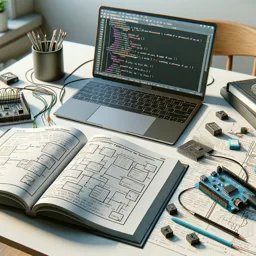Introduction
Creating a successful desktop application goes beyond implementing features—it requires thoughtful design to ensure users have a seamless and enjoyable experience. When using popular programming languages such as Python, Ruby, Java, and C, understanding core design principles can help you build intuitive, efficient, and maintainable applications. In this article, we’ll explore the key design concepts you should incorporate to make your desktop applications stand out.
Consistency and Usability
Consistency in your application’s interface and behavior is vital. Uniform button styles, font choices, and color palettes ensure users can predict actions and learn the application quickly. This applies whether you’re building your interface with Java Swing, GTK for C, Python’s wxPython, or Ruby’s Shoes. Usability goes hand-in-hand with consistency—keep menus simple, group related functionality, and provide clear labels.
Performance Optimization
Desktop applications should run smoothly on a range of hardware configurations. In C and Java, memory management and threading can have a major impact on performance. Python and Ruby developers can improve efficiency by minimizing resource-heavy operations on the main thread and leveraging libraries for optimized graphical rendering. Always profile your app and address bottlenecks early in development.
Accessibility and Internationalization
Inclusive applications reach a wider audience. Use semantic UI components, provide keyboard shortcuts, and ensure your design is screen-reader friendly. Internationalization is also crucial—implement language selection and Unicode support so users around the globe can access your app. Libraries in each language, such as Java’s ResourceBundle and Python’s gettext, make this easier to integrate.
Modularity and Maintainability
Well-structured code leads to easier testing and future enhancements. Apply modular design principles, such as separating UI logic from application logic. In object-oriented languages like Java and C, use design patterns (e.g., MVC—Model-View-Controller) to clearly define responsibilities. Both Python and Ruby encourage modular file structures and reusable components.
Error Handling and User Feedback
Graceful error handling improves the robustness of your application. Display meaningful error messages that guide users towards solutions without overwhelming them with technical details. Log errors for troubleshooting, and provide non-blocking notifications where appropriate. In any language, prioritize a user-centric approach when exceptions occur.
Conclusion
Applying these design principles ensures your desktop applications are practical, user-friendly, and adaptable. No matter your language of choice—Python, Ruby, Java, or C—focusing on consistency, performance, accessibility, maintainability, and effective error handling will help you deliver software that users love to use.

































